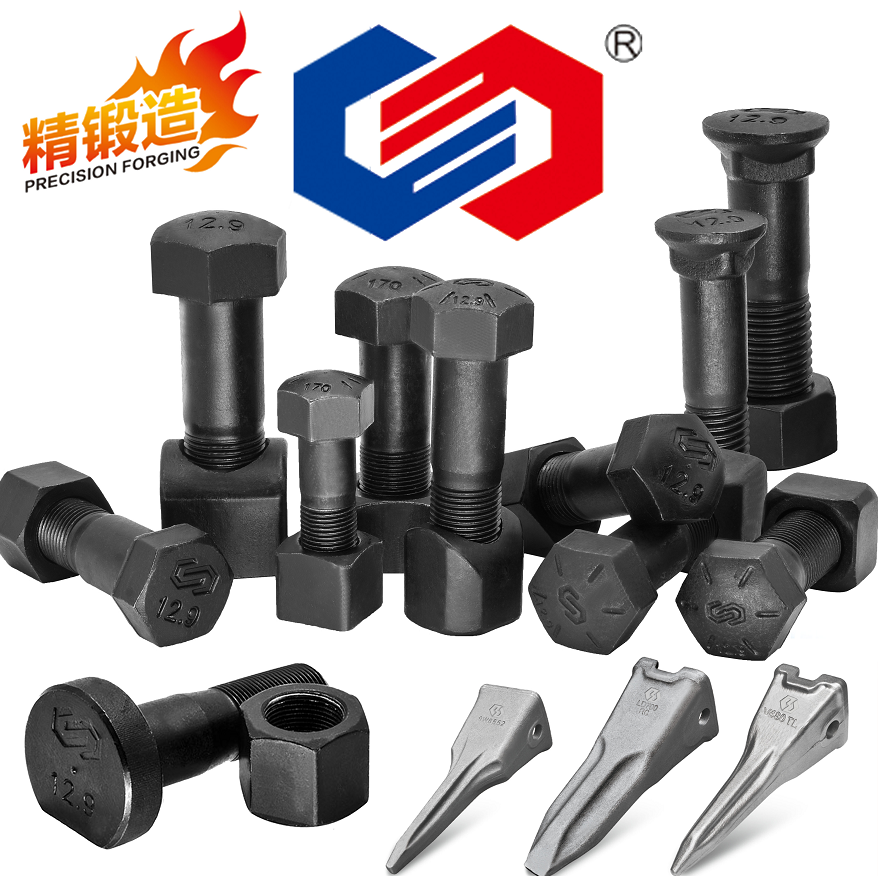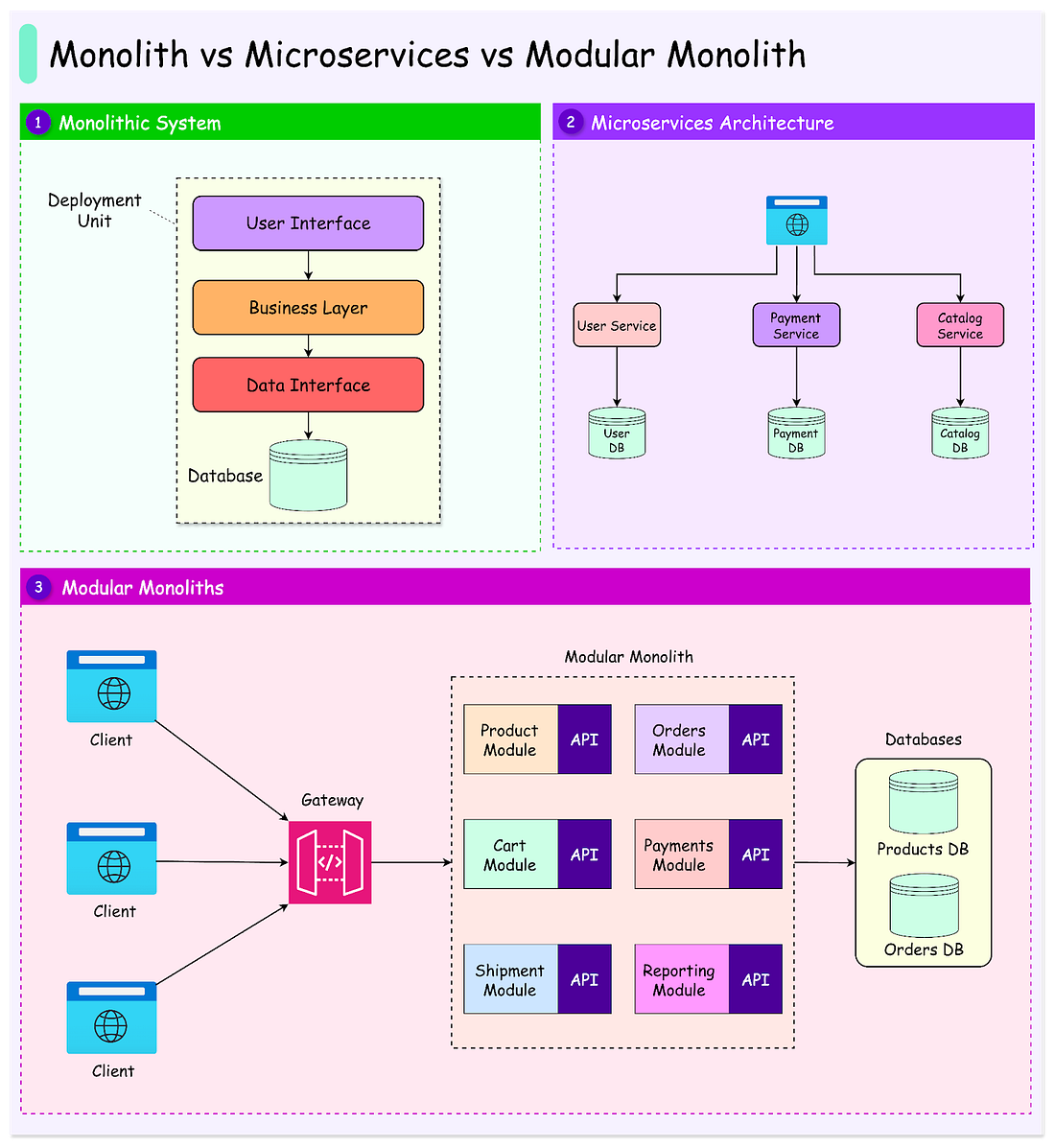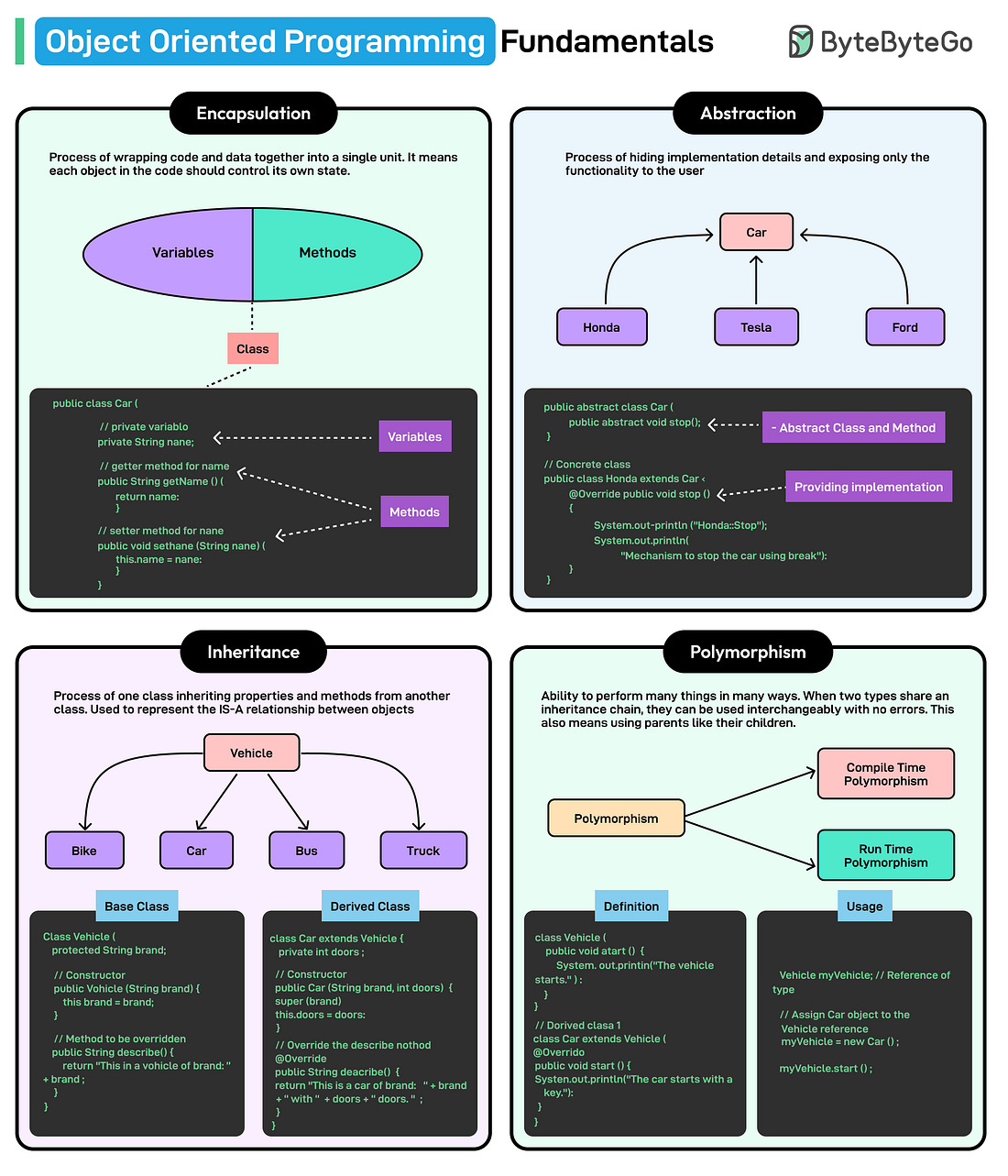Archives
- By thread 5217
-
By date
- June 2021 10
- July 2021 6
- August 2021 20
- September 2021 21
- October 2021 48
- November 2021 40
- December 2021 23
- January 2022 46
- February 2022 80
- March 2022 109
- April 2022 100
- May 2022 97
- June 2022 105
- July 2022 82
- August 2022 95
- September 2022 103
- October 2022 117
- November 2022 115
- December 2022 102
- January 2023 88
- February 2023 90
- March 2023 116
- April 2023 97
- May 2023 159
- June 2023 145
- July 2023 120
- August 2023 90
- September 2023 102
- October 2023 106
- November 2023 100
- December 2023 74
- January 2024 75
- February 2024 75
- March 2024 78
- April 2024 74
- May 2024 108
- June 2024 98
- July 2024 116
- August 2024 134
- September 2024 130
- October 2024 141
- November 2024 171
- December 2024 115
- January 2025 216
- February 2025 140
- March 2025 220
- April 2025 233
- May 2025 239
- June 2025 303
- July 2025 29
-
supply metal silicon with the best price
Dear infoGood day to you!
I hope this message finds you well.
My name is summer, and I am reaching out from Tianjin Heshengchangyi International Trade Co., Ltd.
We specialize in the production and distribution of high-quality metal silicon and silicon carbide, essential materials for various industrial applications.At Tianjin Heshengchangyi, we pride ourselves on our commitment to excellence, ensuring that our products meet the highest standards of purity and performance.
Our state-of-the-art manufacturing facilities, combined with strict quality control processes, allow us to consistently deliver top-notch products that exceed customer expectations.
We understand that your company is a leader in ferro alloys . We believe that our metal silicon and silicon carbide can significantly enhance your product offerings and contribute to your continued success.
Here are a few key benefits of partnering with us:1. **Superior Quality**: Our products undergo rigorous testing to ensure they meet international standards.2. **Reliable Supply Chain**: With our robust logistics network, we guarantee timely delivery to your doorstep.3. **Competitive Pricing**: We offer competitive prices without compromising on quality.4. **Technical Support**: Our team of experts is always available to provide technical assistance and support.
We would be delighted to discuss how our products can meet your specific needs and explore potential collaboration opportunities.
Could we schedule a call or meeting at your earliest convenience?Thank you for considering Tianjin Heshengchangyi International Trade Co., Ltd. as your trusted partner.
We look forward to the possibility of working together and achieving mutual success.
Best regards,summerTianjin Heshengchangyi International Trade Co., Ltd.MF:+8618522821872WECHAT/WHATSAPP:13920243022
by "sales05" <sales05@hscy-industry.com> - 07:33 - 27 Mar 2025 -
Get ClickFunnels + One Funnel Away FREE!
Ready to take action? Here's an offer you can’t refuse!Here’s the deal…
I’ve been holding the videos you saw this week back for a long time, and decided to release them in THIS masterclass because I wanted to over-deliver some value for you this week to give you a bunch of “a-ha” breakthroughs you can use in your business!!
And I hope they did exactly that!
Because if you don’t have a ClickFunnels account yet, I want to make you a crazy offer to get started!!
For a limited time…
I’m giving you a FREE 14-day ClickFunnels trial AND full (FREE) access to the One Funnel Away Challenge (Normally $997!!)
(Psssst! It’s the training that’s helped over 200,000 entrepreneurs launch their first successful funnel!)
GRAB YOUR FREE CLICKFUNNELS TRIAL + ONE FUNNEL AWAY TRAINING HERE >>
This is hands down the fastest way to get your business online and begin making sales… either creating the online career (or lucrative side-hustle) you’ve always wanted!
Whether you sell products, coaching, courses, or services, ClickFunnels + OFA will give you both the tools and the training you need to build, launch, and scale!
GRAB YOUR FREE TRIAL + ONE FUNNEL AWAY TRAINING HERE >>
ClickFunnels has changed my life and the lives of hundreds of thousands of entrepreneurs… and I want to help you do the same!!
This offer will end Saturday at 11:59 PM… don’t miss this amazing opportunity!!!
See you inside,
© Etison LLC
By reading this, you agree to all of the following: You understand this to be an expression of opinions and not professional advice. You are solely responsible for the use of any content and hold Etison LLC and all members and affiliates harmless in any event or claim.
If you purchase anything through a link in this email, you should assume that we have an affiliate relationship with the company providing the product or service that you purchase, and that we will be paid in some way. We recommend that you do your own independent research before purchasing anything.
Copyright © 2018+ Etison LLC. All Rights Reserved.
To make sure you keep getting these emails, please add us to your address book or whitelist us. If you don't want to receive any other emails, click on the unsubscribe link below.
Etison LLC
3443 W Bavaria St
Eagle, ID 83616
United States
by "Russell | ClickFunnels" <noreply@clickfunnelsnotifications.com> - 05:54 - 27 Mar 2025 -
Reliable 40-Year Manufacturer of High-Grade Excavator and Bulldozer Parts
Dear Sir,
Greetings.
This is April from HY machinery.We are a professional China manufacturer for producing excavator bulldozer undercarriage and GET parts bolt and nut over 40 years. Our products are of good quality and all our bolts can reach 12.9 grade.And we also sell casting and forging bucket tooth bucket adapter,pin and bushing,undercarriage parts and so on. We'd like to know if you need.
Attached are some of our products photos and catalogue for your reference.If you are interested, please contact with me for more details. Thank you!

We sincerely hope to cooperate with you.Waiting for your reply soon!
Thanks & Best Regards,
April Huang / Sales
Quanzhou Hongyi Machinery
Email:sales02@qzhongyi.cn
Mobile/Whatsapp: +86-15396695787
Website:https://zhulonghy.com/
by "Hajenr Rhsnr" <4795156@gmail.com> - 04:27 - 27 Mar 2025 -
Explore Our Innovative Household & Pet Products for Your Market
Dear info,
I hope you are doing well. I am reaching out to introduce our company, a trusted supplier of high-quality household and pet products. Our product range includes:
- Non-slip solutions: anti-slip mats, shelf liners, and tapes
- Home essentials: static window film, seal cling wrap, and disposable cutting boards
- Smart waste solutions: odor-sealing waste bags and biodegradable mats
- Cooling products: cooling mats and neck cool rings
- Pet care: pet toys and pet clothes
We are committed to providing innovative and practical solutions that enhance everyday convenience. With strict quality control and competitive pricing, we believe our products can add value to your business.
We would love to discuss potential cooperation opportunities. Let’s schedule a call at your convenience!
Looking forward to your thoughts.
Best regards,
Lucy Zhao (Sales Manager)
Mob: 0086 13390807539 (wechat & whatsapp)
Company:Rongxin New Material(Jiangsu) Co.,Ltd
Address: No.30,Dongting Lake Road,Hongze District,HuaiAn City,Jiangsu Province,China
by "Isma Mofig" <mofigisma@gmail.com> - 03:58 - 27 Mar 2025 -
Mastering OOP Fundamentals with SOLID Principles
Mastering OOP Fundamentals with SOLID Principles
In this article, we will take a deep dive into the core fundamentals of OOP followed by an introduction to the SOLID principles.͏ ͏ ͏ ͏ ͏ ͏ ͏ ͏ ͏ ͏ ͏ ͏ ͏ ͏ ͏ ͏ ͏ ͏ ͏ ͏ ͏ ͏ ͏ ͏ ͏ ͏ ͏ ͏ ͏ ͏ ͏ ͏ ͏ ͏ ͏ ͏ ͏ ͏ ͏ ͏ ͏ ͏ ͏ ͏ ͏ ͏ ͏ ͏ ͏ ͏ ͏ ͏ ͏ ͏ ͏ ͏ ͏ ͏ ͏ ͏ ͏ ͏ ͏ ͏ ͏ ͏ ͏ ͏ ͏ ͏ ͏ ͏ ͏ ͏ ͏ ͏ ͏ ͏ ͏ ͏ ͏ ͏ ͏ ͏ ͏ ͏ ͏ ͏ ͏ ͏ ͏ ͏ ͏ ͏ ͏ ͏ ͏ ͏ ͏ ͏ ͏ ͏ ͏ ͏ ͏ ͏ ͏ ͏ ͏ ͏ ͏ ͏ ͏ ͏ ͏ ͏ ͏ ͏ ͏ ͏ ͏ ͏ ͏ ͏ ͏ ͏ ͏ ͏ ͏ ͏ ͏ ͏ ͏ ͏ ͏ ͏ ͏ ͏ ͏ ͏ ͏ ͏ ͏ ͏ ͏ ͏ ͏ ͏ ͏ ͏ ͏ ͏ ͏ ͏ ͏ ͏ ͏ ͏ ͏ ͏ ͏ ͏ ͏ ͏ ͏ ͏ ͏ ͏ ͏ ͏ ͏ ͏ ͏ ͏ ͏ ͏ ͏ ͏ ͏ ͏ ͏ ͏ ͏ ͏ ͏ ͏ ͏ ͏ ͏ ͏ ͏ ͏ ͏ ͏ ͏ ͏ ͏ ͏ ͏ ͏ Forwarded this email? Subscribe here for moreLatest articles
If you’re not a subscriber, here’s what you missed this month.
Monolith vs Microservices vs Modular Monoliths: What's the Right Choice
Dark Side of Distributed Systems: Latency and Partition Tolerance
Non-Functional Requirements: The Backbone of Great Software - Part 2
To receive all the full articles and support ByteByteGo, consider subscribing:
Imagine trying to build a complex machine, but instead of using pre-made, reusable parts, we have to carve each component. Every screw, bolt, and gear must be recreated from scratch, making the process slow, error-prone, and nearly impossible to scale.
Software development faces the same challenge. Projects can become unmanageable and fragile without a structured way to reuse, organize, and scale code.
That’s where Object-Oriented Programming (OOP) comes in.
OOP is a programming paradigm that organizes software around objects. Think of objects like LEGO bricks. Each object is a self-contained unit that bundles together data and the methods that operate on that data. By using modular and reusable components, developers can build complex systems efficiently without reinventing the wheel every time.
A few key reasons why OOP is so widely used in modern development are as follows:
OOP lets developers structure large applications into smaller, modular components.
If OOP is applied correctly, changes in one part of the code are less likely to break other parts.
OOP allows better code reuse opportunities.
Data is protected and accessible through controlled mechanisms.
Four core fundamentals form the foundation of object-oriented programming: encapsulation, abstraction, inheritance, and polymorphism.
However, just knowing these principles is not enough. While OOP provides structure, not all object-oriented code is good code. To avoid this, developers also follow SOLID principles.
In this article, we will take a deep dive into the core fundamentals of OOP followed by an introduction to the SOLID principles.
Core Fundamentals of OOP...

Continue reading this post for free in the Substack app
Like
Comment
Restack
© 2025 ByteByteGo
548 Market Street PMB 72296, San Francisco, CA 94104
Unsubscribe
by "ByteByteGo" <bytebytego@substack.com> - 11:36 - 27 Mar 2025 -
Sinomach Construction Equipemnt One-Stop Manufacturer
Dear info,
I hope this mail finds you well. We are from Sinomach Construction equipment , one of the fortune 500 enterprises, making construction machinery in China for over 60 years.Our main products include excavator, loader, grader, compactor, bulldozer, and other equipments. Please let me know if you need our catalogue.
If you are interested, we can arrange a video call to provide you with a virtual tour of our factory and showcase our machines directly.Waiting for your feedback. Let's talk more.
Best regards,
Sinomach
by "tech4" <tech4@changlin1.com> - 05:47 - 27 Mar 2025 -
Your Invitation to Elite Golf Events and Expert Financial Advice
Professional guidance... Hello Sir/Madam,
Have you considered combining first-rate financial guidance with exclusive access to the UK’s best golf events? At Fairway Wealth Partners, that’s exactly what we offer.
When you choose one of our preferred Independent Financial Advisers (IFAs), you can look forward to:
- Professional guidance on pensions, investments, life cover, and retirement planning.
- VIP invitations to 4 elite golf events each year.
- Monthly four-ball rounds at over 600 golf clubs across the UK.
It’s an unbeatable combination—effective wealth management paired with exceptional golf privileges.
Ready to learn more? Reply to this email or click here to book a short, no-obligation call and discover how we can take both your finances and your golf game to the next level.
Best regards,
Richard Ellis
Project Director
+44(0)7380 337 315
+44(0)1924 975 502


by "Richard - Fairway Wealth Partners" <info@fairwaywealthpartners.com> - 04:02 - 27 Mar 2025 -
How can banking leaders make lasting productivity gains?
On McKinsey Perspectives
Meet the challenge Brought to you by Alex Panas, global leader of industries, & Axel Karlsson, global leader of functional practices and growth platforms
Welcome to the latest edition of Only McKinsey Perspectives. We hope you find our insights useful. Let us know what you think at Alex_Panas@McKinsey.com and Axel_Karlsson@McKinsey.com.
—Alex and Axel
—Edited by Belinda Yu, editor, Atlanta
This email contains information about McKinsey's research, insights, services, or events. By opening our emails or clicking on links, you agree to our use of cookies and web tracking technology. For more information on how we use and protect your information, please review our privacy policy.
You received this email because you subscribed to the Only McKinsey Perspectives newsletter, formerly known as Only McKinsey.
Copyright © 2025 | McKinsey & Company, 3 World Trade Center, 175 Greenwich Street, New York, NY 10007
by "Only McKinsey Perspectives" <publishing@email.mckinsey.com> - 01:18 - 27 Mar 2025 -
23rd April: Transform your business processes with AI and ERP
Discover how AI-ready data can streamline your operations.
SAP WEBCAST
Fuel your most important business processes with AI-ready data that is connected, actionable, and contextualWe’re thrilled to introduce our upcoming webcast, “Fuel your most important business process with AI-ready data.”
Join us on April 23 to explore how a harmonized data foundation empowers you to take full advantage of AI.
Join Threveni Mohan, Demo Portfolio Lead for BDC, Michel Haesendonckx, Global Functional Lead – oCFO, as well as Som Suresh, Senior Manager at Deloitte to:- Explore how to use your data to enable AI, deliver tailored insights, and optimize decision-making.
- Discover how AI-enabled ERP can optimize working capital management, sales and distribution, and people analytics.
- See a live walkthrough demonstrating real-world scenarios and solutions.
Don’t miss this opportunity to see how AI-ready data can help you elevate your business processes


Contact us
See our complete list of local country numbers



SAP (Legal Disclosure | SAP)
This e-mail may contain trade secrets or privileged, undisclosed, or otherwise confidential information. If you have received this e-mail in error, you are hereby notified that any review, copying, or distribution of it is strictly prohibited. Please inform us immediately and destroy the original transmittal. Thank you for your cooperation.
You are receiving this e-mail for one or more of the following reasons: you are an SAP customer, you were an SAP customer, SAP was asked to contact you by one of your colleagues, you expressed interest in one or more of our products or services, or you participated in or expressed interest to participate in a webinar, seminar, or event. SAP Privacy Statement
This email was sent to info@learn.odoo.com on behalf of the SAP Group with which you have a business relationship. If you would like to have more information about your Data Controller(s) please click here to contact webmaster@sap.com.
This offer is extended to you under the condition that your acceptance does not violate any applicable laws or policies within your organization. If you are unsure of whether your acceptance may violate any such laws or policies, we strongly encourage you to seek advice from your ethics or compliance official. For organizations that are unable to accept all or a portion of this complimentary offer and would like to pay for their own expenses, upon request, SAP will provide a reasonable market value and an invoice or other suitable payment process.
This e-mail was sent to info@learn.odoo.com by SAP and provides information on SAP’s products and services that may be of interest to you. If you received this e-mail in error, or if you no longer wish to receive communications from the SAP Group of companies, you can unsubscribe here.
To ensure you continue to receive SAP related information properly, please add sap@mailsap.com to your address book or safe senders list.
by "SAP" <sap@mailsap.com> - 10:34 - 26 Mar 2025 -
Professinal Food Flavor supplier---Qihuan Biotechnoglogy from China
Dear Friends,
Nice to write you. We are Hangzhou Qihuan Biotechnology Co.Ltd from China.
We are the food flavor manufacturer and produce the food flavors for more than 10 years, there are more than 1000 kinds of sweet flavors available;
In addition, we have mature drink formulas and help many clients to proceed their drink factory. From the raw materials to the finished drink one-stop service will be provided by our company.
I learned your company is importing the sweet food flavors, we would like to take this chance to introduce our flavors, we welcome you to list the flavors you are interested in and we arrange the free samples for your testing.
Currently the materials of coco powder is expensive ,we suggest our chocolate flavor which is very strong and well-balanced chocolate aroma and stable quality, the price is USD 9.8/KG.
It can instead of the coco powder and still keep the wonderful taste. Chocolate Flavour----Your best choice to instead of the coco powder!
Should you have any questions or comments, please feel free to contact us at any time!

by "Funsc Ys" <funscys@gmail.com> - 09:50 - 26 Mar 2025 -
High-quality waterproof breathable membrane: your best choice
Dear info,
Hello! I am Alex from ZZPIP. We specialize in the production of waterproof breathable membranes and are committed to providing customers with high-quality products and services. Our waterproof breathable membranes have excellent air permeability and lasting waterproof effects, and are suitable for multiple industries. They are your best choice to improve product quality.
Please check our website www.zzpip.com. I believe that our products will bring new solutions to your needs. Looking forward to working with you!


Sincerely,
Alex
whatapp:15851072826
Company website: www.zzpip.com
by "sales20" <sales20@xzp-eptfe.com> - 05:16 - 26 Mar 2025 -
Enhancing the Color of Your Products: Premium Dyes Supply
Dear Manager,
Glad to contact you, we are Hangzhou Emperor Chemical Co,. Ltd,following information will help you know us better.
OUR STRENGTH
Ø Gold member of CHINA INTERDYE exhibition.
Ø More than 12 years experience export to textile, paper, leather industry, can provide professional
suggestions.
Ø Analyze the market and predict price movements. It’s important information due to Dyes price is
always changeable.
Ø Inform to stock shortage products, in case to influence your production.
Ø Customize according to your samples.
OUR STRONG PRODUCTS
Ø BASIC GREEN 4, BASIC VIOLET 10, BASIC VIOLET 1
Ø DISPERSE CRUDE DYE: DISPERSE BLUE 359, RED 60, YELLOW 54
Ø SOLVENT YELLOW 114, SOLVENT RED 111, SOLVENT BLUE 35, SOLVENT VIOLET 59
Ø NIGROSINE BLACK 2, BLACK 5, BLACK 7
Welcome to contact us for any information on DYES.
YOUR AFFIRMATION, OUR SUCCESS!!!
Best regards
Apple
Hangzhou Emperor Chemical Co., Ltd
Add: Nanyang Development Zone, Xiaoshan, Hangzhou,China
Fax: +86 (571) 8373-5532
Cell: +86 15825526950(whatsapp and wechat are available)
Email: chem@emperorchem.com
by "pigment" <pigment@emperorcolor.com> - 04:50 - 26 Mar 2025 -
Strengthening business-building capabilities
Re:think
How new corporate capabilities drive organic growth FRESH TAKES ON BIG IDEAS
ON BUSINESS BUILDING
To build new businesses, first build new musclesDaniel Aminetzah
Historically, companies have developed specific strengths that have helped them thrive. These could be any combination of customer relationships, operational know-how, R&D capabilities, technical infrastructure, or sales channels. Until recently, such trusted playbooks worked to keep companies growing at a steady clip. But in today’s innovation economy, these traditional levers are often not enough. For most established companies, there are fewer new geographies to enter, fewer obvious M&A moves to make, and fewer well-worn growth paths to take. Now, what’s increasingly fueling organic growth for companies are their business-building capabilities.
Building and scaling businesses—whether those are new products, divisions, spinouts, or joint ventures—is like starting a new workout that builds muscles someone didn’t even know they had. Just as it takes commitment to see results from lifting weights, it takes dedication to get business building right. It requires crystallizing ideas, creating early road maps, mobilizing capital and talent, and executing and scaling. It’s arduous, but the rewards are worth it. Our research finds that companies that invest 20 percent of their growth capital into business building achieve revenue growth two percentage points higher than those that don’t.
Many CEOs recognize the importance of developing their business-building muscles. In a recent global survey of more than 1,100 executives, half said that business building is one of their top three strategic priorities. We have seen that enthusiasm from CEOs in many sectors, including agriculture, financial services, healthcare, manufacturing, retail, and technology. To get business building right, part of the “secret cocktail” is acting with high velocity—always tempered with judgment—paired with an openness for ecosystem collaboration and partnership. It’s an experimental process.
For companies in established sectors, this type of “move fast and break things” ethos can feel uncomfortable. But it’s a crucial way to stay ahead of uncertainty. Early in my career, I spent almost a decade working in the intelligence sphere, where I learned the importance of constantly building new capabilities that adversaries didn’t expect as a critical way to stay ahead. What it takes to succeed in the business world is not that different. CEOs used to rely on the fact that their companies would grow in a predictable way for at least the next five years. Not anymore. Now, a lot can change in five years.“Companies that invest 20 percent of their growth capital into business building achieve revenue growth two percentage points higher than those that don’t.”
Business building doesn’t mean reinventing the wheel. CEOs can often leverage learnings from similar businesses that others have built successfully; we call these “super themes.” CEOs can also learn from their peers about what hidden traps to avoid. Business building also means identifying core strengths and then extending those competencies. It means finding the right talent and the right capabilities to execute an idea quickly based on a clear playbook. Business building typically doesn’t follow a linear path, and there can be some bumps along the way. But almost every CEO we have helped to build new ventures has said that the business-building process brought more than just new revenue. It allowed them to reimagine their companies’ futures through the lens of what’s possible.
AI will play a part in almost every company’s future, but it’s not a panacea for growth. McKinsey research shows that 60 percent of business leaders want to launch gen-AI-enabled businesses in the next five years, but many are off to a slow start. What’s more, we see that employees are ready for AI, but CEOs have yet to act on its full potential. However, the most forward-thinking leaders recognize that AI will change more than just day-to-day workflows; it will be at the very core of how their companies operate.
What are some best practices CEOs can use to successfully build and scale new businesses? First, they should pinpoint their companies’ unique advantages—the special strengths that help them surpass their competitors. Second, they should assess how to apply these advantages to the different super themes that have already created value for other relevant companies. Third, they can use AI tools to jump-start the brainstorming process. In just a few hours, a team can use an exploratory AI tool to define an initial direction for a potential new business. They can then pressure test the idea among synthetically generated target segments and use AI to subsequently refine ideas all the way through execution and scaling. Of course, it’s important to remember that AI tools are just that: tools. Designing products, services, and businesses that appeal to humans requires keeping humans in the loop.
The most important business-building muscle CEOs need to build is stamina. They must ensure that business building stays top of mind and doesn’t take a back seat to the day-to-day needs and short-term priorities that bog down many companies. CEOs can keep brainstorming business ideas in a continual, iterative way. They can keep connecting with external partners to discuss potential joint ventures. Because business building is not a “one and done” process; it’s continual and always evolving.ABOUT THIS AUTHOR
Daniel Aminetzah is a senior partner in McKinsey’s New York office.
MORE FROM THIS AUTHOR
UP NEXT
Chris Bradley on arenas of competition
Arenas of competition are industries that produce outsize growth and reshape the business landscape. Eighteen arenas could reshape the global economy over the next two decades.
This email contains information about McKinsey’s research, insights, services, or events. By opening our emails or clicking on links, you agree to our use of cookies and web tracking technology. For more information on how we use and protect your information, please review our privacy policy.
You received this email because you subscribed to our McKinsey Quarterly alert list.
Copyright © 2025 | McKinsey & Company, 3 World Trade Center, 175 Greenwich Street, New York, NY 10007
by "McKinsey Quarterly" <publishing@email.mckinsey.com> - 02:36 - 26 Mar 2025 -
Request for Quotation
Hi,
I'm interested in your products.
Could you please share your catalog & price for selection. I will send our order list and quantity asap.
Thanks and best regards
Mário.
by "Mário Sérgio" <salustianos149@gmail.com> - 02:07 - 26 Mar 2025 -
Last chance to take your first step towards AI-readiness!
Last chance to take your first step towards AI-readiness!
Just 1 day to go! Join us tomorrow to level up your API governance maturity and get started on the road to AI readiness!Hi Md Abul,
Your road to AI readiness starts tomorrow! The 'From chaos to confidence: Accelerating API governance maturity with Tyk' webinar is just 1 day away, and this is one you won't want to miss!In this session, we’ll dive into how the API governance toolkit, paired with Tyk's Universal API governance platform, will take the chaos out of APIs, and not only bring control to your ecosystem, but instill confidence within your team(s).
Here’s what you can expect from tomorrow’s session:
- We'll explain the need for universal API governance and why it’s a game-changer for teams at scale
- Mark Boyd, founder of Platformable, will deep dive into how the API Governance Toolkit provides a blueprint for enterprise governance
- Carol Cheung, senior product manager from Tyk will give you an exclusive sneak peek at our Universal API Governance Platform
📅 Date: March 27th 2025
🕙 Time: 10 am EST/ 2 pm GMT
📍 Location: Zoom webinar, discussion, demo
See you there,
Budha and teamTyk, Huckletree 199 Bishopsgate, Broadgate, London, City of London EC2M 3TY, United Kingdom, +44 (0)20 3409 1911
by "Budha from Tyk" <budha@tyk.io> - 07:00 - 26 Mar 2025 -
Reliable and Durable Computer Accessories for Your Needs
Dear info,
I hope this email finds you well. I'm reaching out from Shenzhen Tianfeng International Co., Ltd., a leading manufacturer specializing in high-quality computer accessories.
We offer a range of products, including hard drives, PC motherboards, and power supplies. With over 10 years of experience in the industry, we ensure superior performance and reliability.
We would be delighted to explore potential business opportunities with your company. Please feel free to contact me if you have any questions or need more information.
Best Wishes,
Candy
whatsapp: + 86 18319068061Shenzhen Tianfeng International Technology Co., Ltd.
Website:https://www.skywindintl.com/
Address: 802, Fucheng Digital Innovation Park, No. 15, Shijing Road, Fumin Community, Fucheng Street, Shenzhen, Guangdong, China
by "Htebazile Aboites" <aboiteshtebazile927@gmail.com> - 05:21 - 26 Mar 2025 -
high-quality aluminum composite panel
Dear Sirs
How are you?
With more than 20 years of experience in metal composites industry, we take pride in providing high-quality aluminum composite panel to our valued clients. Besides,we also develop and offer a wide range of technical products, such as copper composite panel, steel composite panel, for your speical applications.
We believe that our competitive pricing, combined with the same level of quality products, can offer you better alternatives compared to your current suppliers. We have successfully export our panel to various countries such as Europe, Dubai, Saudi Arabia, Qatar, Morroco, Tanzania, Singapore, Malaysia, Australia, Canada, and the United States. Additionally, we have collaborated with renowned Paint brands like PPG, AkzoNobel, and others.
To help you understand our quality and service, could you email me your requirement for the product? We will get back to you very soon with the priced, sample, or further explanation.
Thank you for considering Alucobest as your potential business partner. We look forward to the opportunity of serving you and building a long-lasting mutually beneficial relationship.Best Regards
Ali ZhangExport Team LeaderShanghai Huayuan New Composite Materials Co.,Ltd.No.888, Xin Jin Road, Qingpu Shanghai,ChinaMobile: +86 13003258901 (wechat)www.alucobest.com
by "Tailer Kroni" <kronitailer995@gmail.com> - 05:04 - 26 Mar 2025 -
Trust in AI: How can companies deploy technology responsibly?
On McKinsey Perspectives
The most trusted institutions Brought to you by Alex Panas, global leader of industries, & Axel Karlsson, global leader of functional practices and growth platforms
Welcome to the latest edition of Only McKinsey Perspectives. We hope you find our insights useful. Let us know what you think at Alex_Panas@McKinsey.com and Axel_Karlsson@McKinsey.com.
—Alex and Axel
•
Earning employees’ trust. Across institutions, US employees have the highest level of trust in their employers when it comes to responsible rollout of gen AI, according to McKinsey Senior Partner Lareina Yee and coauthors’ analysis of research on AI in the workplace. That level is greater than the trust that employees place in universities, large tech companies, and start-ups for such deployment. Managers and businesses tend to instill very high trust when they communicate frequently and transparently about gen AI and are committed to their teams’ success with the technology, reflects Silicon Valley pioneer Reid Hoffman, a partner at Greylock Partners and cofounder of LinkedIn and Inflection AI.
•
Human–AI interaction. In the workplace, using AI can give humans “superpowers” so they may spend more time performing complex tasks, Hoffman says. Similar to how accountants’ roles, which used to include a lot of manual calculations, changed with the arrival of spreadsheets, AI tools will change workers’ roles—not necessarily eliminate them, Hoffman adds. Explore “Looking ahead: Leaders’ role in the trust equation” for more advice on driving value with AI adoption. It’s the final edition of the AI in Action: An interactive learning journey series of four learning modules that complement McKinsey’s Superagency in the workplace: Empowering people to unlock AI’s full potential report.
—Edited by Belinda Yu, editor, Atlanta
This email contains information about McKinsey's research, insights, services, or events. By opening our emails or clicking on links, you agree to our use of cookies and web tracking technology. For more information on how we use and protect your information, please review our privacy policy.
You received this email because you subscribed to the Only McKinsey Perspectives newsletter, formerly known as Only McKinsey.
Copyright © 2025 | McKinsey & Company, 3 World Trade Center, 175 Greenwich Street, New York, NY 10007
by "Only McKinsey Perspectives" <publishing@email.mckinsey.com> - 01:30 - 26 Mar 2025 -
(GV & RB Masterclass) Gary Vee goes OFF on branding!
His Q&A is wild… you gotta see thisYou ready for round 2??
Today in the Gary Vee & Russell Brunson Masterclass Gary Vee comes out swinging!
His presentation is jam-packed with value and insights on how to take your brand big with “unconventional wisdom”.
Think… wave pool on a 100 degree day! That’s how packed this video is with solid gold advice on branding and soooo much more!!
GO WATCH GARY’S VIDEO FROM THE FUNNELS VS BRANDING MASTERCLASS HERE >>
Now, if you’ve followed me for any amount of time, you know I’m all about funnels. I believe in crafting your level 10 offer, driving traffic, and converting that traffic into customers FAST!!
But Gary…. He’s all about branding. He’ll tell you to play the long game… post content, build your audience, and wait for the momentum to take off.
So… who’s right??
Honestly – I think we both are.
In today’s video, you’ll see our two worlds collide!!
GO WATCH GARY'S VIDEO FROM THE GARY VEE & RUSSELL BRUNSON MASTERCLASS HERE >>
And don’t miss tomorrow’s email! We’re diving into how to create viral videos that get MILLIONS of views with the Harmon Brothers!!
See you then!
Russell Brunson
P.S. - Don’t forget, you’re just one funnel away….
P.P.S. If you missed the first Gary Vee & Russell Brunson Masterclass video I sent yesterday, here is the link:
Watch me explain the secret to ClickFunnels viral success HERE >>
© Etison LLC
By reading this, you agree to all of the following: You understand this to be an expression of opinions and not professional advice. You are solely responsible for the use of any content and hold Etison LLC and all members and affiliates harmless in any event or claim.
If you purchase anything through a link in this email, you should assume that we have an affiliate relationship with the company providing the product or service that you purchase, and that we will be paid in some way. We recommend that you do your own independent research before purchasing anything.
Copyright © 2018+ Etison LLC. All Rights Reserved.
To make sure you keep getting these emails, please add us to your address book or whitelist us. If you don't want to receive any other emails, click on the unsubscribe link below.
Etison LLC
3443 W Bavaria St
Eagle, ID 83616
United States
by "Russell | ClickFunnels" <noreply@clickfunnelsnotifications.com> - 01:06 - 26 Mar 2025 -
Get Ahead: AI strategies to elevate your business
Are you set up for AI success? Learn what it takes to thrive in the AI eraGet Ahead: AI strategies to elevate your business
The Agentforce Advantage
Transforming ASEAN Business with AI

Latest innovation
Unleash the Power of Agentforce
Every company has more jobs to be done than resources. That’s why many are turning to Agentforce to build AI agents that work autonomously alongside human employees to support customers, drive efficiencies, and reduce costs.
Find out more 
Data Strategy
How Unified Data is Breaking Barriers to AI in ASEAN
Discover how businesses in ASEAN like FPT Software and UEM Sunrise are unifying data to break silos, fuel AI innovation, and deliver personalised customer experiences.
Read more 
Sales
The Sales AI Playbook: 7 Ways AI Can Help You Close More Deals
Unlock the full potential of AI with tailored use cases, helping your sales team close more deals and boost productivity. Learn how AI can enhance every stage of the sales cycle, from lead generation to final conversion.
Get the playbook 
Analytics and AI
Get ready for AI: What data leaders need to know
Learn what actions you can take to be a more effective leader in today's AI-driven business landscape. Deploy AI the right way, for the right projects, to drive results and improve productivity with Tableau.
Get the guide 
Customer story
ASEAN Trailblazer Spotlight
See how Singapore’s largest retailer FairPrice Group empowers customer service teams, enhances capabilities, and improves efficiency with AI tools.
Read the full story here What's On

On Demand Webinar
Unlocking Growth: AI and Tech Strategies for SMB Success in 2025
On Demand Webinar
The Power of Two: CRM Unlocked with Salesforce + Slack
Join this webinar to discover the future of CRM in Slack, the conversational interface for work and see how Humans and Agents drive customer success together with Salesforce and Slack

On Demand Webinar
The Power of Two: Insights made easy with Salesforce + Tableau
On Demand Webinar
Actionable AI: Power Agentforce to Action Anywhere with MuleSoft
Join this on-demand webinar to learn how to connect AI agents to any third-party systems you use every day, empowering them to take action.
© 2025 Salesforce, Inc.
Salesforce.com Singapore Pte Ltd. 5 Temasek Boulevard #13-01 Suntec Tower 5 Singapore 038985
General Inquiries: +65 6302 5700 | Fax: +65 6302 5777 | Sales: 800 1301 448 (Singapore), 800 967 655 (Hong Kong), +65 6302 5700 (Intl)


This email was sent to info@learn.odoo.com
Manage Preferences to Unsubscribe | View as webpage | Privacy Statement
Powered by Salesforce Marketing Cloud



by "Salesforce" <salesforce@mail.salesforce.com> - 10:32 - 25 Mar 2025






















